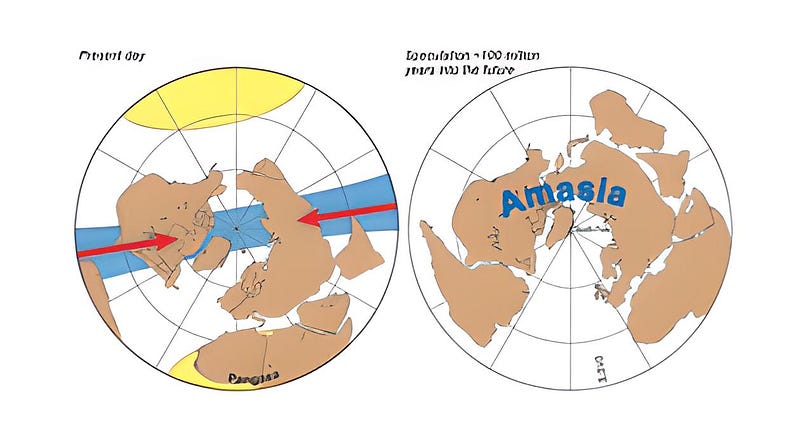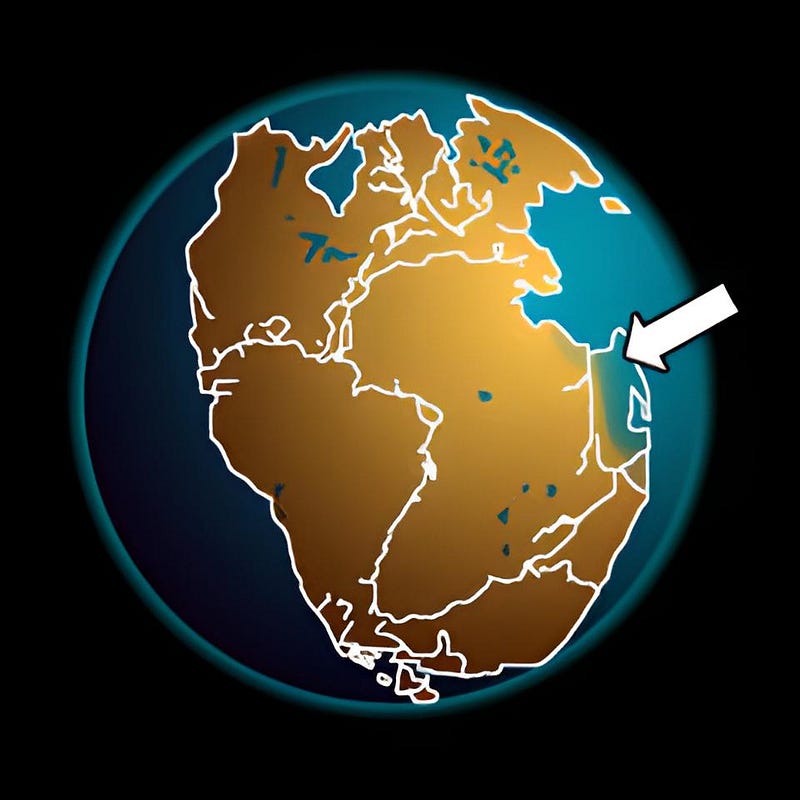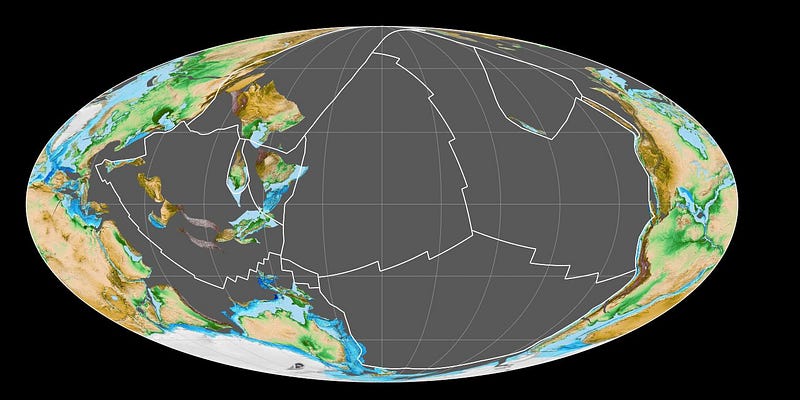The Emergence of Amasia: Our Future Supercontinent
Written on
Chapter 1: The Future of Earth's Continents
In the distant future, the Pacific Ocean is anticipated to vanish, paving the way for a new supercontinent. This geological transformation is projected to unfold over the next 200 million years.
Amasia is the name given to this potential supercontinent, which recent studies suggest could form in approximately 300 million years, taking the place of the Pacific Ocean. But how will this transformation occur?

Amasia — [Photo: Mitchell et al., Nature, CC BY 2.5, via Wikimedia Commons]
During the period spanning 300 to 180 million years ago, the world was vastly different. The continents we know today—Europe, Africa, Asia, the Americas, Antarctica, and Australia—did not exist as separate landmasses. Instead, there was a singular supercontinent referred to as Pangea (meaning Whole Earth). This landmass comprised all current continental plates and was divided into two main segments: Laurasia in the north and Gondwana in the south. Its formation occurred during the Carboniferous period, resulting from the collision of Gondwana with Euroamerica, along with the Siberian and Kazakh landmasses.
What is the supercontinental cycle? This cycle refers to a prolonged geological process that predates both human existence and the age of dinosaurs. The concept was first introduced by geophysicist Alfred Wegener in 1915, who posited that continents drift over time. This theory provided insights into the geographic distribution of flora and fauna across oceans, explaining how similar species could be found on distant continents.
Another notable figure, John Tuzo Wilson, developed the idea of the supercontinental cycle, suggesting that the formation and fragmentation of supercontinents is a recurring event, typically spanning 300 to 500 million years.

Pangea — [Photo: Paginadigital, CC BY-SA 3.0, via Wikimedia Commons]
Section 1.1: The Formation of Amasia
In the span of 200-300 million years, Amasia is expected to emerge. Currently, the global landscape is influenced by various geopolitical tensions, making it hard to envision the future. However, geological processes follow predictable patterns governed by determinism. Researchers from Curtin University in Australia have made significant strides in predicting the timeline for the formation of Amasia through advanced simulations using supercomputers.
The analysis indicates that Amasia will arise from the closure of the Pacific Ocean, primarily due to a significant collision between the continents of America and Asia. This vast ocean, which began to take shape around 700 million years ago during the fragmentation of Pangea, is a remnant of the ancient Panthalassa Ocean. Scientists estimate that the Pacific has been contracting by several centimeters each year, making it the likely site for Amasia's formation.

Panthalassa Ocean — [Photo: Fama Clamosa, CC BY-SA 4.0, via Wikimedia Commons]
It is difficult to predict if humanity will still be present in 200 or 300 million years. If we are, we will likely be at a vastly different evolutionary stage, surrounded by new species that will have emerged by then. The creation of Amasia is expected to significantly alter the climate across various regions, giving rise to new ecosystems. Regrettably, this transformation will not be witnessed by our generation.
The first video titled "Will Pangea Form Again? The Next Supercontinent on Earth" explores the future of Earth's continents and the science behind supercontinent formation.
The second video, "240 Million Years Ago to 250 Million Years in the Future," provides a comprehensive look at Earth's geological history and future projections.
Source: National Science Review
Section 1.2: The Evidence of Ancient Opium Use
Recent research has uncovered the earliest signs of opium usage in ancient civilizations. What insights do the researchers from Israel provide regarding this historical practice?